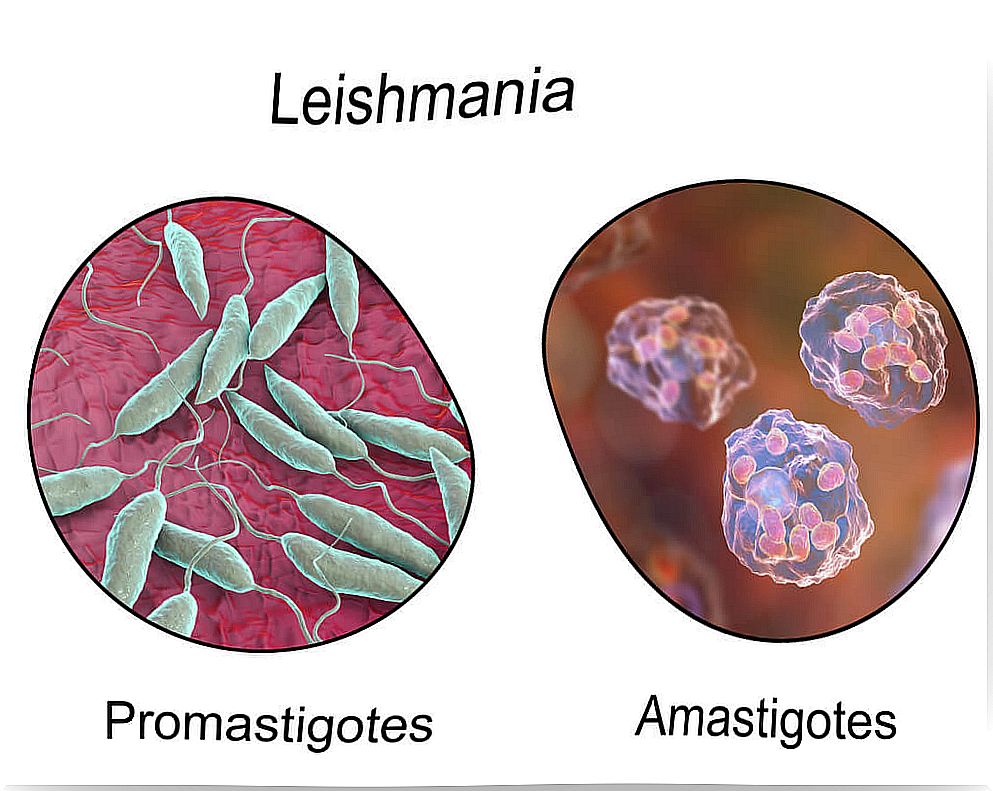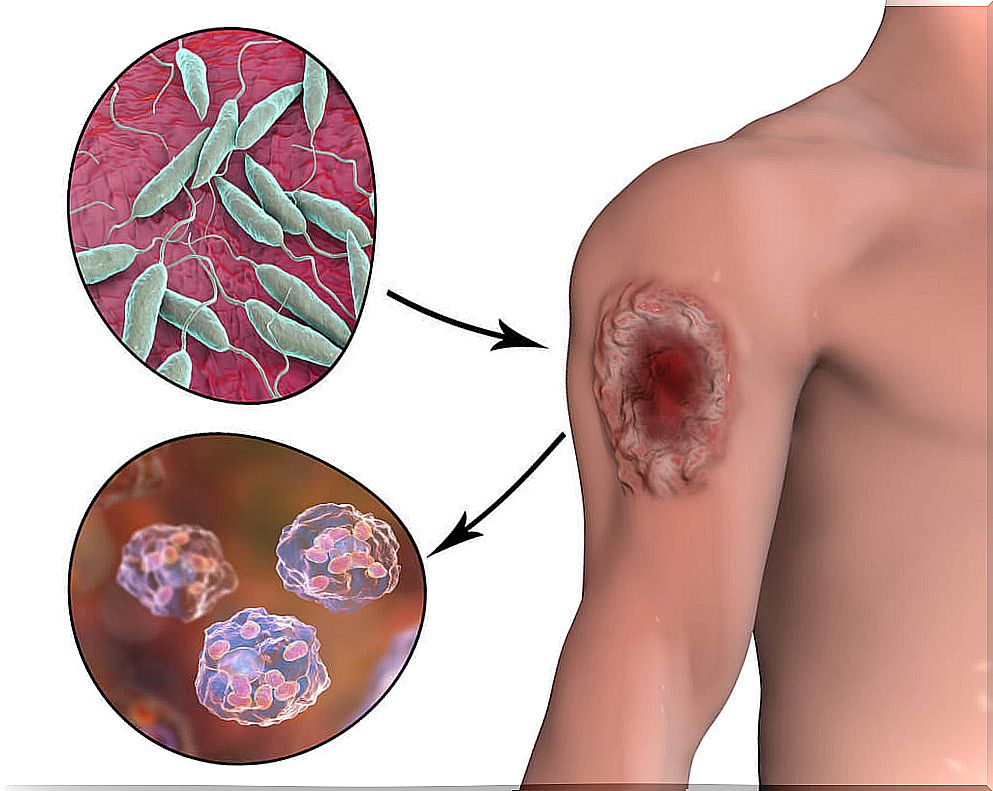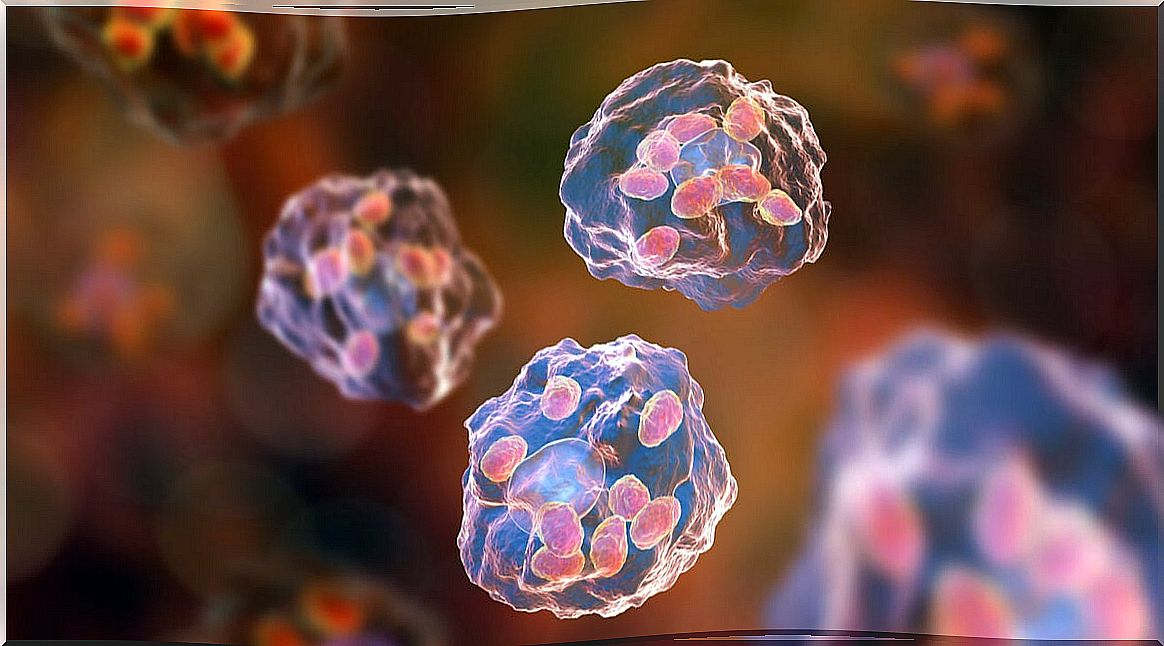Cutaneous Leishmaniasis
Leishmaniasis or the Baghdad boil is an infectious disease produced by protozoa of the genus Leishmania; It is also known as Aleppo Button, Delhi Button, Oriental Boil, or simply Cutaneous Lesihmaniasis.
Leishmaniasis is a group of pathologies that especially affect mucosal tissues. There are different forms of this disease, which are classified according to the tissue they affect. It is possible to distinguish between cutaneous, mucosal or visceral leishmaniasis. The latter is the most serious and the least frequent in humans.
Leishmaniasis is an endemic disease in more than 70 countries, including Spain. Every year between 20,000 and 30,000 people die worldwide as a result of infections by parasites of this genus.
Origin of the disease

The protozoa of the genus Leishmania constitute a group of obligate intracellular parasites in mammals. In this sense, more than 20 species belonging to this genus have been identified. Some of them cause visceral leishmaniasis, others cutaneous leishmaniasis, and others both.
On the other hand, these parasites present two forms or vital stages:
- Amastigote: rounded shape of the protozoan that parasitizes the mononuclear phagocytic system of mammals, causing serious damage to the immune system of the animal or individual.
- Promastigote: flagellate form that appears in the vector that transmits the disease.
The protozoa is present in the saliva of some small mosquitoes belonging to the genus Phlebotomus, diptera that are characterized by having long segmented antennae. These small insects transmit the parasite through their bite. Only females feed on blood because they need the proteins present in it to produce eggs. Males are harmless to humans.
Of interest: Why are some people more attractive to mosquitoes?
Location and figures

Leishmaniasis is an endemic disease in more than 70 countries, including Spain. It is common in tropical and subtropical regions and in the Mediterranean basin. That is to say, practically throughout Africa, Latin America, a large part of Europe, a large number of eastern countries and a large part of Asia.
According to data provided by the World Health Organization (WHO), the disease acquired epidemic proportions in Afghanistan and in the Afghan refugee camps in Pakistan after the North Atlantic Treaty Organization ( NATO) attack on this country. , in their crusade against terrorism, as a consequence of the attacks of September 11, 2001.
After this unusual outbreak of cases, it is estimated that each year between 700,000 and a million new cases are diagnosed. Annually between 20,000 and 30,000 people die as a result of infections by parasites of the genus Leishmania .
Clinical picture of leishmaniasis

The disease manifests itself as a consequence of amastigotes located inside the cells that constitute the phagocytic mononuclear system; that is, monocytes and macrophages. The presence of amastigote in its interior seriously affects the correct performance of the function of these cells, reducing the effectiveness of the immune system of the infected individual.
The first manifestation of the infection in the case of cutaneous leishmaniasis is a reddening of the skin at the site of the bite as a result of the increased blood flow in this area. It is known as erythema, which generally increases in size and evolves into a papule (small eruptive skin tumor).
On some occasions, the lesion can ulcerate in the center and develop raised, well-defined and hyperpigmented edges where cellular parasites accumulate.
If the ulcer develops, it may be exudative or dry. Most of the time it is painless, however, as a result of the overacting of the immune system, lymphadenopathy can appear that can cause some discomfort. That is, lymph nodes near the location of the infection can become inflamed causing some pain.
The cutaneous leishmaniasis usually heals spontaneously over a period of 6 to 12 months, leaving ugly scars in the area of the bite. It does not usually give rise to systemic symptoms, however, it should be treated to avoid possible complications, such as bacterial superinfections.









